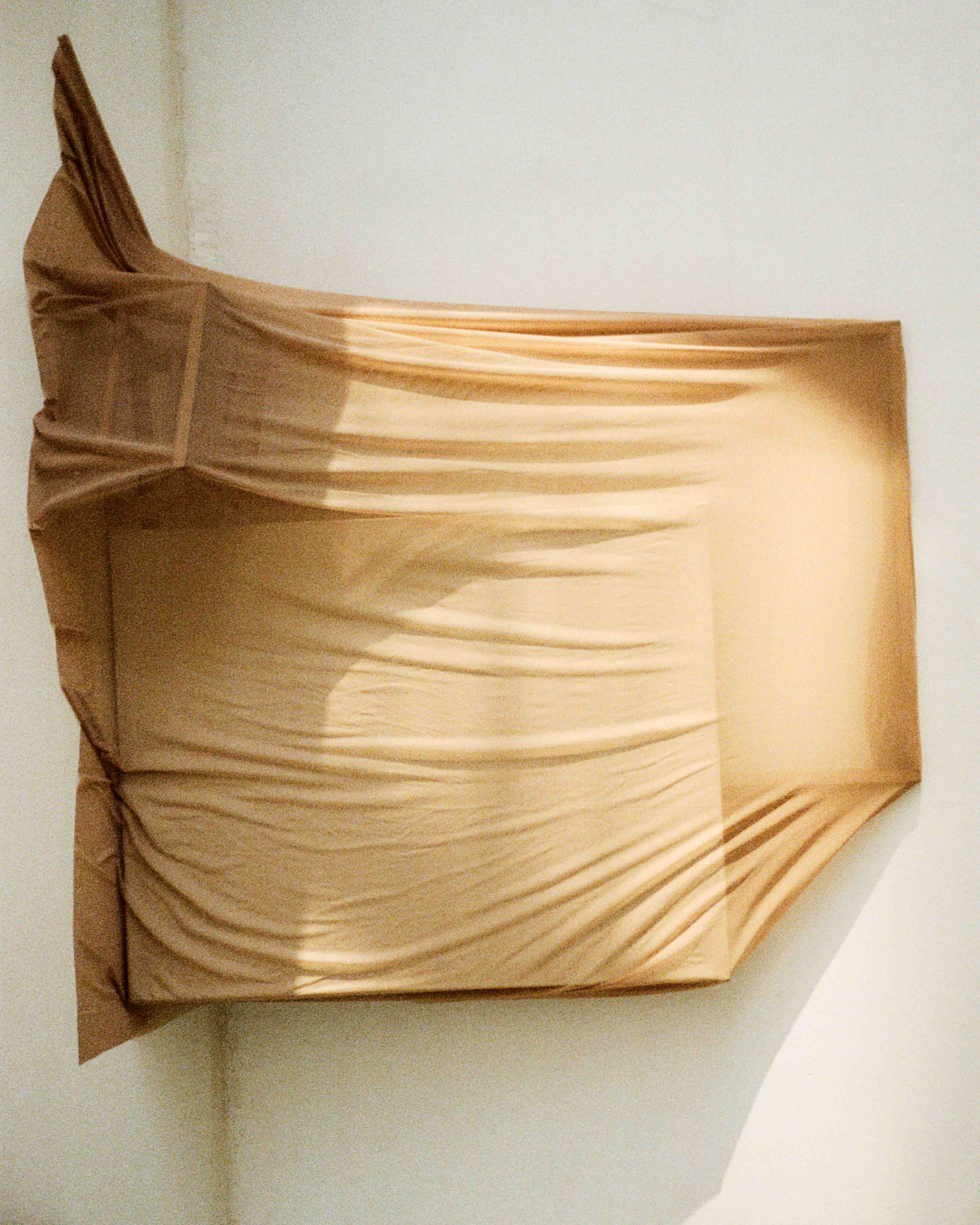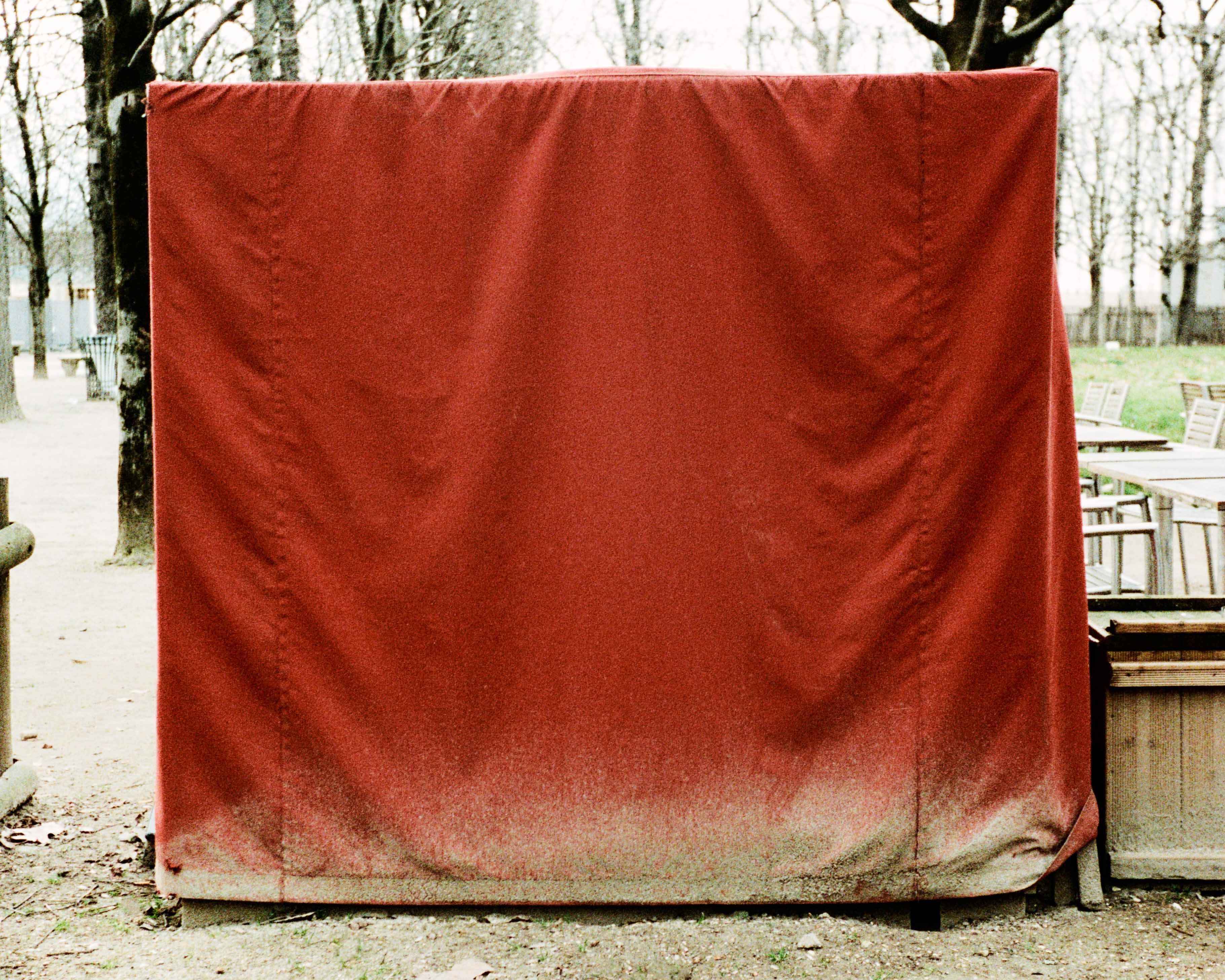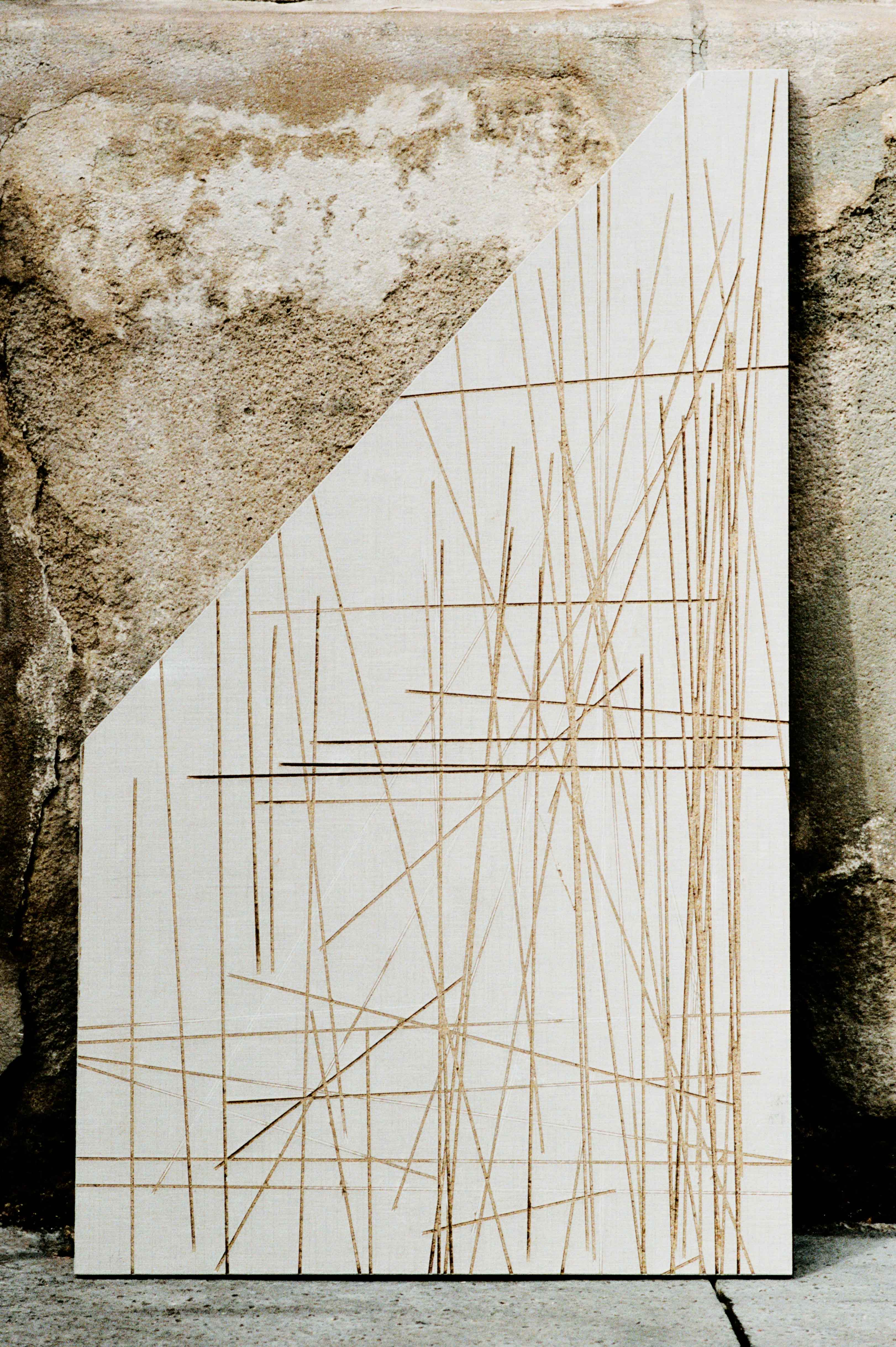In the vast expanse of a timeless, primordial landscape, a colossal serpent slithered across the Earth, its iridescent scales shimmering with the colours of the rainbow. With every twist and turn of its massive body, it carved deep canyons, meandering rivers and towering mountains into the barren terrain. As it moved, waterholes sprang up, breathing life into the land. From these waterholes emerged plants, animals and the intricate web of existence. The giant creature was not merely a creator—it was a force of nature, powerful and unpredictable, capable of destruction as well as creation. His presence commanded awe, reverence and a deep respect for the delicate balance he maintained. This is the story of the Rainbow Serpent, a central figure in the Dreamtime of Aboriginal Australia. It is both myth and metaphor, embodying the forces of nature that shape and sustain life. Like many creation myths, it grapples with fundamental questions of origin: how did life begin and what forces shaped the world as we know it?
In every corner of the world, cultures have wrestled with these questions and created stories to explain the beginnings of existence. As diverse as these myths are, they often share striking similarities—universal reflections of human experience, psychological needs and the desire to find order in chaos. At the same time, they display fascinatingly unique forms, shaped by the environments, values and imaginations of the cultures that gave rise to them.

Many myths depict opposing forces—light and dark, fire and ice, male and female—echoing the ambivalence of the Rainbow Serpent as both creator and destroyer. These dualities embody the fundamental tensions that shape existence, where conflict or union gives rise to harmony. Such opposites, argued Carl Jung and other psychoanalysts, reflect archetypal forces within the human psyche—good and evil, chaos and control. In dealing with these tensions, creation myths frame the origins of existence as a delicate equilibrium in which balance is forged through the dynamic interplay of opposing elements. The Inuit creation story vividly illustrates the interplay of light and dark. According to legend, the world was once shrouded in eternal darkness until the trickster Raven brought light to mankind. Known for his cunning and creativity, Raven stole the light from a miserly being who jealously guarded it. As he soared across the sky with his prize, he released the light into the Heavens, creating the Sun, Moon and stars. This act of transformation underlines the delicate balance between darkness and light, where light becomes a force of creation, knowledge and vitality, countering the consuming enigma of darkness. Similarly, Norse mythology depicts a cosmos born from the dramatic collision of opposites—fire and ice, creation and destruction—emphasising the chaos from which harmony emerges. The story begins with Ginnungagap, a vast, yawning void between Niflheim, the icy realm of fog, and Muspelheim, the fiery realm of heat. When ice met fire, droplets formed, giving birth to Ymir, the primordial frost giant, and Audhumla, the cosmic cow. Embodying both creation and destruction, Ymir was eventually slain by the gods, who used his body to create the world itself—a powerful reminder that out of tension and conflict, creation unfolds.
Similarly, the Babylonian Enuma Elish presents creation as an act of intense violence and cosmic struggle. At the dawn of time, the Universe was a chaotic mix of primordial waters personified by two deities: Apsu, the god of freshwater, and Tiamat, the goddess of the salt sea. Younger gods were born from their union, but their noise and restlessness enraged Apsu. To restore peace, Apsu plotted to destroy his offspring, but the younger gods, led by Ea, struck first and killed him. Grief-stricken and enraged by Apsu’s death, Tiamat swore revenge. She created an army of monstrous creatures, including giant snakes, scorpion men and ferocious dragons, to wage war against her rebellious offspring. The younger gods were powerless against her fury until Marduk, the god of the storm, stepped forward. On the condition that he would be given supreme authority over the gods if he won, Marduk agreed to face Tiamat. In an epic battle, Marduk ensnared Tiamat in his net and used divine winds to open her mouth, filling her body with the fury of the storm. He then struck the fatal blow with his spear, splitting her body in two. From her upper half he created the sky, and from her lower half the Earth. Her tears became the rivers, and her breath the wind that animates the world. To complete his work, Marduk reassembled Tiamat’s defeated army and used their forms to shape the Cosmos, bringing order to chaos and ultimately creating the ‘structured’ Universe we know today.


In many myths, however, creation is not born out of conflict but out of cooperation and union. In Māori cosmology, the gods unite to separate Rangi, the Sky Father, and Papa, the Earth Mother, whose embrace had plunged the world into darkness. Led by Tāne, the god of the forest, this collective act of driving the parents apart allowed light to enter and life to flourish. This story reflects the balance between unity and individual roles, mirroring human social dynamics where cooperation is essential for survival. In the Hindu myth of Shiva and Shakti, creation arises from the profound harmony of their complementary forces. Together, Shiva, embodying pure consciousness, and Shakti, representing dynamic energy, bring existence into being through their cosmic dance, the Tandava. Their eternal love transcends the romantic and becomes a metaphysical balance between stillness and movement. Shakti’s energy shapes life and matter, while Shiva grounds and stabilises her wild, creative power. Their union sustains the Cosmos, illustrating how creation arises from the seamless integration of opposing yet interdependent elements.
Another enduring theme in creation myths is the emergence of order from chaos. In Greek mythology, Chaos, a vast and formless void, gave rise to Gaia (the Earth), Tartarus (the Underworld) and Eros (love). From this primordial state, Gaia shaped the Heavens, seas and mountains, symbolising the gradual transformation of disorder into structure. Similarly, in Egyptian mythology, the dark waters of Nun enveloped everything until Atum, the self-created deity, brought order. By separating heaven and Earth through Shu (air) and Tefnut (moisture), Atum’s emergence symbolised the divine will necessary to transform chaos into a structured cosmos. Ethnologists suggest that the motif of order emerging from chaos reflects humanity’s universal need to make sense of the unpredictable and often hostile environments faced by early societies. These myths probably arose as symbolic representations of the cyclical processes observed in nature—floods receding to reveal fertile land, the dawn breaking to disperse the night, or the change of seasons to bring renewal. The transition from formlessness to structure reflects human efforts to impose order on the natural world through agriculture, architecture and social organisation.
In addition, these stories often served as cultural tools for establishing norms and values. By attributing creation to divine intervention, societies reinforced the idea that order is sacred and must be maintained. The act of separating chaos into distinct realms—sky, earth, water—may also reflect the way early humans divided their world into meaningful categories, emphasising the importance of boundaries and balance in sustaining life. This symbolic structuring of the Cosmos helped to frame human existence within a broader, more purposeful order, providing reassurance amid uncertainty and anchoring communities in a shared worldview.


Not surprisingly, water is a recurring motif in creation stories, symbolising the chaotic depths from which life emerges. In Hindu mythology, the Universe begins as a boundless ocean in which Vishnu dreams of creation. A lotus grows out of his navel, from which Brahma emerges to shape the Cosmos. Among the Inuit, Sedna, the sea goddess, dwells in the depths of the ocean. Her severed fingers transform into sea creatures, directly associating water with abundance and life. Even more unusual is the Ainu myth from Siberia, in which the Earth is formed from floating oil, thickened and shaped into land by a divine being. These liquid origins combine chaos, transformation and the tangible process of shaping existence. The role of water in these myths can be interpreted as a reflection of its essential role in human survival and its transformative qualities. Ethnologists and anthropologists such as Claude Lévi-Strauss, Bronisław Malinowski and Mircea Eliade suggest that the ubiquity of water in creation myths is due to its dual nature: it can be both life-giving and destructive, a source of fertility and renewal, but also a force of chaos, as seen in floods or turbulent seas. This duality may have made water a natural symbol for the liminal state between disorder and the structured world of creation.
Similarly, the Cherokee speak of a time when the world was completely covered by water, a vast, endless expanse with no land in sight. In one of their most poetic creation myths, a tiny water beetle volunteered to explore the depths in search of a solution. Despite its small size, the beetle dove beneath the waves and tirelessly searched the murky waters until it found mud at the bottom. The beetle brought the mud back to the surface and deposited it on the water, where it grew and expanded until it became the Earth as we know it. This creation myth stands out from many others in its quiet, poetic simplicity, emphasising the power of persistence and the vital role that even the smallest, most unassuming creatures can play in shaping the world. Unlike grand narratives of cosmic battles or divine architects, it offers a more intimate vision of creation—one born not of monumental forces, but of quiet determination and the overlooked contributions of the humble.
Among the countless creation myths, others stand out for their extraordinary imagination and vivid detail, offering unique perspectives on how the Universe and life itself came to be. In the Chinese tale of Pangu, creation begins with a cosmic egg floating in the void. Inside, all the chaotic elements of the Universe were compressed, and Pangu, the first being, slumbered and grew for 18,000 years. When he finally awoke, he broke the egg and separated its components; the lighter elements rose to form the sky, while the heavier elements sank to form the Earth. To ensure the stability of this new world, Pangu held the sky and the Earth apart as they solidified. Eventually, his immense body was transformed into the very fabric of the Earth—his breath became the wind, his blood the rivers, his bones the mountains and his eyes the Sun and Moon. A similar motif appears in the Orphic tradition of Ancient Greece, in which the Cosmos also begins with a cosmic egg, this one laid by Chronos, the personification of time. Containing all potential existence, the egg hatched Phanes, a radiant being who became the bringer of light and order. As the first god, Phanes embodied vitality and balance, shaping the Cosmos from its chaotic beginnings into a structured whole. Both myths, rich in symbolism, capture mankind’s enduring fascination with the transformation of potential into form, presenting the Universe as a nurtured emergence from a contained primordial state.

In stark contrast to the ordered visions of cosmic eggs and divine architects, the Kuba people of the Congo offer a creation myth of startling rawness and visceral power. According to their tradition, Mbombo, a giant deity, felt an overwhelming sickness and, in an act of cosmic upheaval, vomited the Universe into existence. From his body erupted the Sun, Moon, stars, animals and humans, every element of creation expelled in a chaotic torrent. This myth, both bizarre and strangely poetic, captures the raw beginnings of existence as a physical, almost uncontrollable act. It portrays creation not as a carefully planned process, but as an eruption of life and matter from a divine source. Mbombo’s story challenges notions of perfection in creation and instead embraces the chaotic, unpredictable forces that shape the world.
The Hopi creation story is particularly enchanting, telling of Spider Grandmother, who brought the world into being through song. She spun her silken web across the void, skilfully connecting and drawing together the elements of creation. As her delicate, intricate web expanded, it gave shape to the stars, the planets and the Earth itself, uniting the Cosmos in a living tapestry of connection. This story beautifully emphasises the interconnectedness of all life and depicts the Universe as a delicate and living tapestry. In Kiribati mythology, another spider deity is central. Nareau, the spider god, lived in a chaotic world of darkness and water. Through curiosity and experimentation, Nareau separated the sky from the Earth and began to shape the world. His actions were driven not by precision but by playful exploration, emphasising creation as an organic and experimental process in which curiosity shapes form out of chaos.
Meanwhile, the Tupi-Guarani people of South America imagine creation as a cosmic journey. Celestial beings travelled through a vast void in a flying canoe, scattering seeds that sprouted into mountains, forests and rivers. Sparks flew as their canoe sailed through the darkness and became the stars that light the night sky. This myth intertwines movement, adventure and the birth of the world, presenting creation as a dynamic journey of discovery and transformation. The Dogon people of Mali offer a uniquely poetic vision of creation, beginning with a ‘heavenly womb.’ A divine being, Amma, fertilised a cosmic egg from which the Sun, stars and planets emerged. However, creation did not unfold flawlessly; Amma’s first attempt failed, shattering the egg. Undeterred, he reassembled the fragments to try again. This story suggests that creation, like life itself, is a process of trial and error, characterised by resilience and renewal—a reassuring reminder that even the Cosmos, much like our own humble human endeavours, may have started with a ‘rough draft.’
Creation myths illuminate how people across time and place have sought to make sense of the world, revealing a common human quest to reconcile the mysteries of existence with the forces that sustain it. Combining awe, curiosity and storytelling, these narratives not only reflect our universal desire for understanding, but also continue to inspire wonder in an age of scientific discovery. Remarkably, modern cosmology often mirrors these ancient stories, offering scientific frameworks that echo the themes of creation and destruction found in mythology. The theory of the cyclic or oscillating universe, for example, holds that the Cosmos undergoes endless cycles of creation and destruction, reflecting ancient myths in which worlds are continually formed, dissolved and reborn. First proposed in the 1930s by physicists Albert Einstein and Richard C. Tolman as an extension of general relativity, the cyclic or oscillating universe theory suggested that the Universe expands after a ‘big bang,’ only to contract under gravitational forces into a singularity once more, sparking another ‘big bang’ in an eternal rhythm. Both the Aztec and Indian traditions vividly reflect this cyclical view. The Aztecs imagined the Cosmos passing through successive suns, or eras, each brought to an end by a cataclysmic event and replaced by a new one. Indian mythology, meanwhile, describes cosmic cycles governed by the divine triad of Brahma, Vishnu and Shiva, who represent creation, preservation and destruction, embodying the eternal rhythm of existence in which each end gives rise to a new beginning. These cycles align with certain interpretations of entropy and cosmic evolution, though questions remain about how entropy might reset between cycles.


More recent iterations, such as the theory of the ekpyrotic cyclic universe, resonate deeply with the concept of primordial conflict central to many creation myths. Formulated by Justin Khoury, Burt Ovrut, Paul Steinhardt and Neil Turok in the early 2000s, and rooted in string theory, the ekpyrotic cyclic universe theory suggests that the Cosmos was born from the collision of two three-dimensional ‘branes’ (membrane-like structures) in a higher-dimensional space to propose how these cycles could occur without contradicting current observations of cosmic acceleration. This dynamic interaction is thought to have released the energy necessary for creation, echoing myths such as the Babylonian Enuma Elish, in which the clash between Marduk and Tiamat becomes creation and existence emerges from collision, or Hindu cosmology, in which the gods and demons created the nectar of immortality through their dynamic struggle to churn the Ocean of Milk, giving rise to the ordered world. Although the ekpyrotic cyclic universe theory faces challenges, particularly in reconciling it with data on dark energy and cosmic inflation, it remains a compelling and active area of theoretical research. Its enduring appeal lies in its ability to conceptualise the Universe as eternal and self-renewing, thus avoiding the philosophical and scientific complexities surrounding the idea of a singular ‘beginning’ of existence.
And yet it is the Big Bang theory, the most widely accepted cosmological model today, that offers one of the most poetic and elegant answers to the questions mankind has asked since we first dared to wonder how it all began—an answer that is increasingly being confirmed by formulae and telescopic observations. The theory posits that the Universe began as a singularity—a hyper-dense, incredibly hot agglomeration of energy and matter. From this beginning, space and time expanded, blossoming from a ‘cosmic egg’ of immensely dense matter into the vast, complex Cosmos we inhabit today. Russian astrophysicist Alexei Starobinsky’s groundbreaking work on the quantum effects that influence gravitational waves adds another layer of awe. Like ripples in a cosmic pond, these gravitational waves carry echoes of our cosmic origins, revealing a startling truth: the Universe was once compressed into a space comparable in size to an atom or smaller, a hypothesis that would explain why the modulation of quantum forces, typically active only at the atomic scale, can still be seen imprinted on the vast structure of the Universe.
The idea that everything we know—a breathtaking expanse of billions of galaxies, black holes, swirling nebulae and cosmic wonders—could have originated from something so infinitesimally small is as staggering as it is compelling, rivalling even the most audacious and poetic creation myths. Just as the cosmic egg cradles the seeds of the Cosmos, or the beetle emerges from the depths bearing the mud of creation, modern physics provides a scientific parallel that envisions the immense vastness of the Universe emerging from a single, infinitesimal origin. This shared story of transformation—from chaos to form, from the minuscule to the infinite—underscores the awe-inspiring journey of creation, uniting science and myth in their search for meaning. Just as gods shaped chaos into order, cosmic forces such as gravity and dark matter sculpted the Universe from its quantum beginnings.
Far from being opposites, myth and science complement one another. Myths provide a symbolic framework for understanding creation as a meaningful act, while science reveals the mechanisms behind this profound poetry. The discovery of the Universe’s atom-sized beginnings bridges ancient storytelling with modern exploration, uniting awe and inquiry in the timeless human quest to understand existence. Creation, in both realms, remains a mystery—one that invites us to look deeper, ask more questions, and marvel at the infinite possibilities of being.

